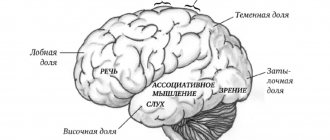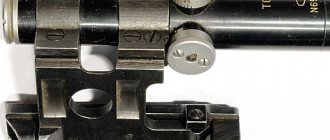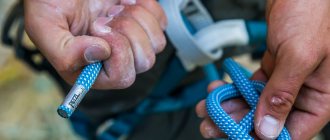Definition
Gas mask is a device designed to protect human life and health when carrying out work where respiratory and vision protection is necessary, as well as emergency situations, or during military conflicts with the use of chemical warfare agents to protect the respiratory system, eyes and face of a person from toxic, radioactive substances substances, bacterial agents and other harmful impurities in the air in the form of vapors, gases or aerosols.
Like many other things that are used in everyday life, the gas mask was originally invented for military needs.
Any gas mask has an insulating front part (mask) - panoramic or with a spectacle assembly.
Types of gas masks by area of application
Gas masks are used in various spheres of life; they are divided into several groups:
- Civilian (GP).
- Military mask-and-box (PMK).
- Industrial (VC).
- Children's and infants.
Civilian gas masks are used to preserve people's health during a chemical attack and air contamination. They have the simplest design and device that every person can understand. They can be used after minimal instruction.
Military gas masks have a more complex design and are supplemented with various attributes (hose, various filters, air cylinder, and so on). Even while using a secondary battery, a soldier must be able to carry out combat missions.
Industrial devices are used in hazardous industries where the concentration of toxic substances is exceeded and when there is a threat of emergency situations. Children's and infant GPs are distinguished by their reduced size.
Types of gas masks
Gas masks according to their operating principle are divided into:
- filter gas masks - with a filter-absorbing box (gas filter) of various brands, the principle of operation is the absorption of harmful or toxic substances, aerosols, etc. by a catalyst (charge) and an anti-aerosol filter.
- insulating gas masks
In turn, filter gas masks are:
- civil filter gas masks
- industrial filter gas masks
- children's filter gas masks
Insulating gas masks are:
- Hose gas masks (according to GOST 12.4.252-2009, the correct name is a hose breathing apparatus) - operating principle - supply of clean air through a hose. It is used if work is carried out in rooms, containers, wells of which from 10 to 40 meters from clean air.
- Based on the use of chemicals that bind oxygen - pneumatogels - IP-4MK, IP-4M
- Compressed air gas masks with compressed air cylinders – principle of operation – air supply from the cylinder through a pressure limiter – reducer – “ZEUS” compressed air breathing apparatus
According to their purpose, gas masks are divided into::
- Civilian gas masks are products intended for use in the event of military conflicts, as well as peacetime emergencies by the civilian population. (The accumulation of stocks of civilian gas masks is carried out by employers, regardless of the form of ownership, for their own, and for the non-working population - by authorities)
- Industrial gas masks are designed for protection during work that requires protection of the respiratory system and vision from harmful substances, or in hazardous industries in case of emergencies or emergencies.
- Military gas masks are required for military personnel and employees of other law enforcement agencies.
- Firefighter gas masks are used when extinguishing fires.
Civil filtering gas masks:
GP-5 - production was discontinued more than 30 years ago, the shelf life in reserves has expired, but a huge amount is stored, because no funds for disposal. Practical use is only for sandblasting work - since only dust protection is needed and the mask completely covers the head.
GP-7 is the most common gas mask. Developed by order of the USSR Ministry of Defense, it was tested on chemical warfare agents, and not on test substances. Quality is guaranteed by the Military Acceptance of the customer representative of the Ministry of Defense of the Russian Federation (VP MO RF). When combined with an additional cartridge, DPG-3 has some of the best protective properties.
DPG-3 - an additional (not spare) gas mask cartridge designed for protection against hazardous chemicals, AHOVID, incl. from ammonia. It is connected to the main filter of the gas mask and attached to the front part using a corrugated tube. Provides additional protection against substances from which a gas mask does not protect and increases the time of protective action.
GP-7V is a modification of the civilian gas mask GP-7 , one of the most reliable and popular gas masks. The GP-7V gas mask is equipped with an MGP-V front part with a device for receiving water from a standard army flask, which allows you to drink water without removing the gas mask.
GP-7VM is a modification of the civilian gas mask GP-7 .
Unlike the GP-7 and GP-7V gas masks, the GP-7VM mask has two nodes for connecting the filter-absorbing box (on the right or left) for ease of use of the gas mask. The GP-7VM also has trapezoidal glass, which increases visibility up to 70%
Classification
There are several different classifications of the device and we will try to consider them all.
Let's consider what filtering and insulating (including hose) gas masks are intended for, what their action is based on, how they differ from each other, their purpose and photo. The main purpose of gas masks for all varieties is the same - protection, but there are certain specifications and conditions for the implementation of this function.
According to the method of protection and type of design, there are two types of gas masks - filtering and insulating:
- Filtering . A filter box is used, designed to preserve organs from those threats whose entry into the respiratory tract can be stopped using a mechanical filter or a chemical reaction. When using a gas mask of this type, its owner continues to breathe ambient air , but it has been purified.
Such devices protect at any given moment only from a certain type of threat, since filter boxes are not universal, and also require replacement of these boxes as they are used up. The service life of the filter varies from several days to a couple of tens of minutes and depends on its type, as well as on the level of environmental pollution. - Insulating. A device with a compressor box is a much more advanced level of protection, which is also completely universal. An oxygen-insulating gas mask is designed to protect the respiratory system in conditions of oxygen deficiency. The differences between insulating gas masks and filtering ones are that they owners breathe the atmospheric air that does not surround them, but with clean air from another source.
Such gas masks are divided into two types, based on the type of source - self-contained breathing apparatus (when the owner has his own compressor box, which contains a cylinder of compressed air) and hose respirators (when air is supplied through a hose from an external source, such as a compressed air pipeline).Combined options are also often used, when the main supply goes through a hose, but in case of an emergency there is also a small autonomous cylinder.
Insulating gas masks look like this photo:
Filter gas masks are also distinguished by type of protection , which is usually indicated by letter and color markings on the filter box. The number after the marking indicates the level of protection as it increases - “1” protects only from low concentrations of gases (up to 0.1%), “2” already allows you to breathe in an atmosphere with 0.5% of toxic substances, and “3” allows you to survive in a place with a concentration greater than 1%.
The marking of a gas mask can be composite if the filter protects against more than one type of toxic substances:
- “P” , the color of the gas mask box is white. Such filters protect against foreign particles and only protect against coarse dust, but “P3” can already withstand suspended particles, mists, bacteria and viruses.
- “A” , color – brown. Protection from organic gases and vapors with a boiling point above 65 °C.
- “AX” , color – brown. The same thing, but for substances with a boiling point less than 65 °C.
- “B” , color – gray. Protection against inorganic gases, including chlorine, fluorine, hydrogen sulfide, etc. Does not protect against carbon monoxide.
- “E” , color – yellow. Protection against nitric acid vapors and acid gases.
- "K" , color - green. Protection against amines – volatile ammonia derivatives.
- “NO” , color – blue. Protection against nitrogen oxides, in particular highly toxic NO2.
- “Hg” , color – red. Protection against mercury vapor and its volatile organic compounds.
- "Reaktor" , color - orange. Protection from radioactive elements, including iodine and methyl iodine.
- "SX" , color - purple. Protection against chemical warfare agents – sarin, soman, etc.
- "CO" , color - purple. Carbon monoxide protection. Such filters increase their weight as they are used, and the number after the marking indicates the maximum permissible deviation from the norm, after which the filter must be replaced.
There is also a classification according to areas of application, according to which the types of gas masks are distinguished into:
- Military . Military models of devices are highly reliable and versatile and are part of the standard equipment of military personnel, and are also used by some specialized structures, such as the Ministry of Emergency Situations.
- Civil . Issued to the public in case of emergency. Quite cheap to produce and generally reliable. Not much different from military models, except for lower quality materials.
- Industrial . Special gas masks for employees working with hazardous substances. Usually built into an OZK or a suit of similar protection class.
- Children's gas masks - these models are used to protect the respiratory organs of children and adolescents; they are distinguished by their reduced size. There are also devices for babies - rubber chambers with a metal frame, into which the child is placed completely and air is pumped through bellows.
GP-7B is a family of gas masks from various manufacturers. Put into production in 2007-2008.
Civilian gas mask GP-7B "UNIVERSAL" - equipped with a metal filter-absorbing box FC Universal brand A1B1EKHgSXP3D (the filter is based on the FPK GP-7k, with additional protection against ammonia, mercury, as well as industrial hazardous substances) and front parts MGP, MGU, rubber front parts , with spectacle unit, 70% visibility, produced in three sizes)
Civilian gas mask GP-7B "OPTIM" - is equipped with a filter-absorbing box made of impact-resistant plastic GP-7Kb "Optim" with protection against ammonia and the front part MP-07 (made of rubber , with a spectacle unit, 70% visibility, produced in three sizes). Production is controlled by the military representative office of the Ministry of Defense (military acceptance)
Civilian gas mask GP-7Bt - is equipped with a filter-absorbing box made of impact-resistant plastic GP-9Kb "Optim" brand A1B1E1K1HgP3 with additional protection for ammonia, mercury, as well as industrial hazardous substances and the front part MP-04 ( made of rubber , with a spectacle unit, visibility 70 % are produced in three sizes)
Civil gas mask GP-7B, GP-7VMB - is equipped with a filter-absorbing box made of plastic GP-7Kb brand A1B1E1K1SxHgP3 with additional protection for ammonia, mercury, as well as industrial hazardous substances and the front part Breeze-4303 (made of thermoplastic elastomer TPE , with a spectacle unit, visibility 70% are produced in three sizes). The peculiarity of thermoplastic elastomer, in contrast to rubber, is that it is less elastic, “cakes” and is destroyed during degassing.
What does a gas mask consist of?
The structure of a gas mask depends on the method of protection and the type of design of this means of protection.
All filter gas masks consist of a filter-absorbing box (FAC) and a front part. For ease of storage, gas masks are placed in a special gas mask bag. The kit also includes a rubber stopper to cover the opening of the filter box.
The main task of the filter-absorbing box is to clean the inhaled air from radioactive and chemical elements. FPC consists of special absorbers and a smoke protection filter. The air inhaled by a person passes first through a filter, being cleaned of dust and smoke particles, then through absorbers, which clean the air of toxic particles.
The front part of the gas mask is a rubber mask, which is designed to protect the mucous membranes of the eyes, facial skin and supply purified air to the respiratory organs. The rubber helmet-mask is available in 5 sizes and includes spectacle assemblies, fairings, valve blocks and valve box.
The spectacle unit consists of sight glasses and a pressure glass that allows you to attach an anti-fog film.
Filter-absorbing boxes can have different dimensions depending on the modification of the gas mask and the scope of its application.
Gas masks GP-9
GP-9 is the generation of gas masks following the GP-7 and GP-7B. GP-9 is not a specific model, but a family of gas masks, produced in different modifications and by different manufacturers.
Gas mask GP-9 with panoramic mask MPG-Izod with fpk gp-9kb “Optim”, the features of which are a plastic (composite materials) filter-absorbing box and a panoramic front part with a silicone liner and two intercoms. The size range in this configuration is 1st and 2nd sizes with small and medium size pads for height 1 and medium and large sizes for height 2. The Filter mount is central.
Gas mask GP-9 with panoramic mask ARTIRUS-U(R) ARTIRUS-U(R) with fpk gp-9kb "Optim" has the same protective properties, but the front part has a higher category 3, as well as a universal size of the front part and the mask pan , which is the optimal combination to simplify the organization of issuing gas masks in case of emergency. Possibility of mounting the filter on the right or left.
Gas mask GP-9 with mask MP-04 with fpk gp-9kb “Optim”, in terms of protective characteristics it corresponds to the above modifications, but has a front part with a spectacle unit (the use of anti-fog films is required due to the lack of a mask) and a size range of three heights . Possibility of mounting the filter on the right or left. This model can also be equipped with a drinking device, but under normal conditions this is not relevant, since it requires training in using a drinking device, and the protective action time of one filter from the kit will allow you not to die of thirst J)), while a poorly trained person can get a portion toxic substances if used incorrectly.
Civilian gas mask GP-9 with mask MAG-3 and fpk A1B1E1K1HgP3. The peculiarity of this model is the MAG-3 front part with great visibility - 94% and a universal size of the mask and mask, as well as a filter in a metal body.
Civilian gas mask GP-9 with front parts MGU and MGU-V and FPK A1B1E1K1HgP3. The front part with a spectacle unit (the use of anti-fog films is necessary due to the lack of a mask), the size range is three heights. Right or left FPK mount. The front part of MGU-V with a drinking device.
Gas mask GP-21
GP-21 - fifth generation gas mask! The lightest gas mask. Does not require additional costs for an additional cartridge for protection against hazardous chemicals and AHOVID Two sizes of the front part of MP-03. The presence of a mask holder eliminates the use of anti-fogging agents such as anti-fogging films or gels, which simplifies training in the use of the GP-21 civilian gas mask and reduces the readiness time. The system of straps with tightening in the dressed position makes it easier to put on the gas mask. The front part of MP-03 corresponds to the third category, i.e. can be used during emergency rescue operations. The panoramic mask with thermally mounted “soft” glass is resistant to scratches and abrasion. "Soft" glass cannot break or crack. It is possible to attach the filter on the left or right side. Visibility over 80%.
Purpose and types
Regardless of the model, this device is designed to protect the organs of the respiratory system , organs of vision, and facial skin from radioactive substances, toxic or bacterial agents.
These dangerous impurities come in the air and take the form of steam, aerosol or gas.
According to the principle of operation, gas masks for the respiratory system are divided into filtering and insulating models .
Filtering gas masks are designed to protect the lungs from incoming harmful impurities by trapping them in special materials.
The latter completely limit access to the respiratory system to ambient air. The supply of oxygen to gas masks of the IP type is ensured using a special cartridge built into it.
Gas masks UZS VK
UZS VK 320 is the first UZSVK of domestic manufacturers that combined the protective properties of the GP-7 gas mask and an additional DPG-3 cartridge in one filter-absorbing box of the VK320 A1B1E1K1R3 brand. It is completed with face parts (masks) MGP, MGU, MAG-3l or MAG-3. In combination with the l/h MAG-3l, MAG-3 is called UZS VK EKRAN 320. The MAG-3 mask has the best visibility - 94% and a universal size of the mask and mask.
UZS VK 600 – designed for rescuers. It is completed with face parts (masks) MGP, MGU, MAG-3l or MAG-3. In combination with the l/h MAG-3l, MAG-3 is called UZS VK EKRAN 320. The MAG-3 mask has the best visibility - 94% and a universal size of the mask and mask. FPK - VK600 A2V2E2K2R3 (VK 600 filter is recommended to be used with a corrugated tube).
Children's gas masks
PDF-2D is a children's gas mask used for civil defense purposes for children from 1.5 to 7 years old. Supplied with filters from gas masks GP-7 or with filter VK320 from UZS VK 320 or FC Universal from GP-21. It is completed with the front part of MD-4 of the first and second growth.
PDF-2Sh is a children's gas mask used for civil defense purposes for children from 7 to 16 years old. Supplied with filters from gas masks GP-7, with filter VK320 from UZS VK 320 or FC Universal from GP-21. It is completed with the front part of MD-4 of the second and third height.
KZD-6 - for children under 1.5 years of age, the use of a gas mask is impossible, so children's protective cameras KZD-6 are used, which look like a carrying bag with a built-in viewing window and a filter element. Protective cameras for children are many times more expensive than gas masks.
Industrial filter gas masks
They differ in the types of substances from which they protect and in the protection class. The type of substances in the labeling is indicated by the letters A (organic), B (inorganic), E (acidic vapors and gases), K (ammonia) (for special filters Hg, CO, NO, SX are also added).
The protection class is indicated by numbers from 1 to 3; the higher the number, the higher the protective properties.
Filters are divided into combined and gas - combined filters are equipped with an anti-aerosol filter of the 3rd protection class and P3 is added to the marking.
Depending on the frequency of use, filters are either disposable or reusable – reusable ones are marked with the letter D.
The protective action time of an industrial gas mask filter depends on the filter’s protection class (the higher the class, the longer) and the concentration of chemicals (the higher the concentration, the shorter the protective action time). Reusable filters should be stored with the cap and cap closed after use.
How can you tell if a gas mask filter no longer provides protection and needs to be replaced? – by the appearance of odor, because All gases have an unpleasant odor, so when the filter begins to lose its protective properties, an unpleasant odor will appear. An exception is filters with protection against carbon monoxide (carbon monoxide, CO), the suitability of which for protection against carbon monoxide is determined by the weight of the filter - the weight gain cannot exceed 20 grams.
Industrial filter gas masks produced by JSC Tambovmash
They are produced in complete sets with front parts ShMP-1, ShM-2012 and panoramic masks MAG and PM-88.
Depending on the configuration, the filters are small in size - PPF-5M, medium in size - PPF-5S and large in size PPF-5B. Filters weighing up to 500 grams are connected to the front part directly, more than 500 grams using a corrugated tube.
The range of filters included in the PPF package is represented by the following brands: filter FG-5M brand A2/ B2/ K2/ A2AX/ V2K2, filter FG-5MU brand A2B2E2K2, filter FK-5M brand A2P3D/ B2P3D/ K2P3D/ B2E2P3D/ B2K2P3D / A2AKhP3D, filter FK-5MT brand A2B2E2AKhP3D, filter FK-5MT brand A2B2E2K2P3D, filter FK-5MT brand A2B2E2K2AKhP3D, filter FG-5S brand A3/K3, filter FK-5S brand A3P3D/K3P3D, filter FG-5B brand B3/A3AX, filter FG- 5B brand А3В3Э2К2, filter ФК-5Б brand А3АХР3D/ В3Р3D/ В3К2Р3D/ В3Э3Р3D, filter ФК-5Б brand А2В3Э3АХР3D, filter ФК-5Б brand А3В3Э2К2Р3D, filter ФК-5Б brand А2В2Э2К2COSXР3D, filter ФК-10РШ brand А3В3Э2 AKhP3D, filter FK-5B brand A2B2E2K2COSXNOP3D, filter FK-5MT A2B2E2K2HgP3D, FK-5B brand HgP3D.
The name of a specific gas mask model consists of the name industrial filter gas mask - PPF-5, filter dimensions M, S, B (PPF-5M, PPF-5S, PPF-5B), name of the front part and filter brand, for example, PPF-5M with front part of MAG with FK-5M brand A2P3D.
Industrial filtering gas masks produced by Sorbent JSC
Types of gas masks
The following types of gas masks are currently available to the civilian population:
- Civil
- They differ from military samples in cheaper materials of manufacture. Must be issued by civil defense centers in the event of an emergency - a man-made disaster or natural disaster, the main factors of which are poisonous gases. In most cases, citizens purchase them on their own in specialized stores. The effectiveness of this personal protective equipment is directly dependent on the type of filter element that is used.
- Industrial
- used in an enterprise with hazardous working conditions, where the potential danger of the production process has a high probability of an accident with the release of harmful substances into the atmosphere. Such devices are more expensive; some models are designed for long-term wear. Industrial gas masks have many design options, different types of masks and mounting locations for filter elements.
According to the method of protection against toxic substances, gas masks are divided into filtering and insulating.
- Filtering gas masks
- use a special container into which a mechanical filter or chemical reagents are inserted. The cheapest models use an activated carbon reagent with preliminary air purification from solid particles using fiber filters. Typically, such devices are used in industrial models, since a certain type of threat can be foreseen in advance. The protection time depends on the concentration of the toxic substance in the air and can range from several hours to several days. What gas masks protect against certain combustion products, but not against carbon monoxide.
- Insulating gas masks
are universal personal protective equipment. The main difference and advantage over filtering ones is that the owner is completely isolated from the outside air. Insulating gas masks are divided into two types:
- Devices based on compressed air or oxygen. The main element of such a means of protection is an oxygen cylinder under a pressure of 150 atmospheres.
The design provides for a special bag with a volume of 5 liters. Into which oxygen enters through a pressure-reducing valve. In addition, there is a special cartridge with a chemical reagent that absorbs exhaled CO2. Duration of use up to 2 hours. Insulating gas masks based on compressed air have a simpler design, similar to the design of a scuba tank. The exhaust air is exhaled into the atmosphere. Such devices have a shorter service life on one refill of 30-60 minutes.
- Regenerative-type insulating gas masks contain cartridges filled with chemical compounds containing oxygen in a bound state. When CO2 and water vapor enter the cartridge, a chemical reaction occurs, releasing oxygen. The duration of use of one registration cartridge can be 1-5 hours, depending on the intensity of physical activity.
Based on the location where the filter element is attached, one can distinguish between a hose gas mask and one that is attached to a face mask.
Industrial filter gas masks with threaded connection
Filtering gas mask PFMG-96 (small size filtering gas mask) is equipped with filters DOT 220 brand A1B1E1P3D, DOT 250 brand A1, DOT 250 brand A1B1E1, DOT M 460 brand A1B1E1K2SO15SX, DOT 460 brand K2, DOT 460 brand A2B2E2, DOT 460 grade A2B2E2AX.
Filtering gas mask PFSG-98 (medium size filtering gas mask) is equipped with filters DOT M 600 brand B2E2K2SO20SX, DOT M 600 m.B2E2K2SO20SX with DOT P3D, DOT 600 brand K3P3D, DOT 600 brand A2B3E3P3D, DOT 600 brand A2B3E 3Р3D, DOT 600 brand А2В2Э2К1АХР3D, DOT 600 grade A2B2E2K2P3D, bunker 600 grade A2B3E3AKhP3D, bunker FOS 780 m.A2B2E2AX, bunker P3D
Large URAL filter gas mask with filter DOT 780 m.A2B2E2P3 (expanded charge)
The RUBEZH filter gas mask is equipped with filters DOT 320 brand A2B1E1K1P3D, A2B2E2P3D, DOT pro 250 + brand A1B1E2, DOT pro 250 brand A1B1E1K1, DOT pro 250 brand A2, DOT pro 250 brand K2, DOT pro 460 + brand A2B2E2K2, DOT pro 460+ brands A2B2E2AX, A2B2E2, DOT about 460 brands K3, DOT about 320 brands A2P3D, DOT about 320 brands HgP3D, DOT about 320 + brands K2P3D, DOT about 320 + brands A2B2E2P3D
The RUBEZH SUPER filter gas mask is equipped with filters DOT pro 600 brand A3AKHR3D, DOT pro 600+ brand A2B2E2K2AKHR3D, DOT pro 600+ brand K3P3D
Filtering gas mask "AZOTCHIK" with filter DOT M 600 brand A1B2E2K2NOP3D
All industrial gas masks with a threaded connection are equipped with panoramic masks MAG, MAG-4, MAG-3L or helmet-mask ShM-2012.
Industrial filter gas masks with bayonet connection
Filtering gas mask UNICS with a panoramic mask MAG-2 or UNICS 5100 (have a universal size, the ability to use protective films, UNICS 5100 has a silicone seal and liner) are equipped with two filters with a bayonet connection of the brands DOTeko 120 brand A2, DOTECO 120 brand K2, DOTECO 120 brand A1B1E1, DOTeko 120 brand A1B1E1K1, DOTeko 150 brand A2B2E2, DOTeko P3D. It is possible to additionally use anti-aerosol filters of class P1, P2, P3 using a special holder.
Insulating gas masks
Insulating gas masks provide the greatest universal protection for the human respiratory system; They are used in conditions of a lack of oxygen in the atmosphere or extremely high gas contamination, as well as when the composition of air pollutants is unknown.
Insulating gas masks with regenerative cartridges using chemically bound oxygen are produced by Tambovmash JSC - IP-4M with cartridge RP-4-01, IP-4MK with cartridge RP-7 or RP-7B, IP-6 with cartridge RP-6.
Hose insulating gas masks:
equipped with front parts ShMP-1, ShM-2012 and panoramic masks MAG and PM-88 and hose lines of 10, 20 and 40 meters. Self-priming gas masks for 10 and 20 meters can be supplied in bags or on a drum. Gas masks 20 and 40 meters with manual or electric blowers are supplied on a drum. The main models are PSh-1S, PSh-1B, PSh-1S-20, PSh-1B, PSh-1B-20, PSh-20RV, PSh-20ERV, PSh-20ERV-2, PSh-40RV, PSh-40ERV.
are equipped with front parts ShM-2012 and MAG or MAG-4 and hose lines of 10, 20 and 40 meters. Main models – PSh-1, PSh-1B, PSh-1-20, PSh-1B, PSh-1B-20, PSh-2-20, PSh-2-40
All manufacturers can supply hose gas masks with cotton or lavsan ammunition.
Gas masks: types and purpose
When studying gas masks, the types and purposes of these protective equipment, it is necessary to highlight the following types of gas masks:
- civil;
- military;
- industrial
Civilian gas masks are placed in crowded areas so that in the event of a chemical attack, the civilian population can use them and escape from poisonous and contaminated air. Civilian gas masks consist of simple elements, allowing even an unaware person to easily use them.
Military gas masks are equipped with additional special attributes, such as a hose for air suction and high-quality processing. It is assumed that a soldier, even during a chemical attack, can carry out assigned tasks and attack the enemy.
Gas masks are divided into 2 types according to the method of protection and type of design:
- Filtering;
- Insulating
Filtering gas masks consist of a filter box that protects the respiratory system from chemical exposure by purifying the air inhaled by a person. Thus, using a filter gas mask, a person breathes air purified by the filter. The need to replace the filter box makes it difficult to use a gas mask. This is the only drawback of filter gas masks. The service life of the filter can range from several tens of minutes to several days.
Insulating gas masks are completely universal and have a higher degree of human protection from exposure to chemicals. Insulating gas masks are used in conditions of lack of oxygen. The main feature and advantage of this type of gas masks is that a person does not breathe purified air inhaled from the outside, but pre-prepared clean air from a pre-prepared source.
Insulating gas masks are divided into two types:
- self-contained breathing apparatus - includes a compressor box with a compressed air cylinder placed in it;
- hose respirators - air is supplied through a hose from an external source, for example, a compressed air pipeline
The disadvantage of insulating gas masks is that its use is limited by the amount of compressed air contained in the cylinder. Most often this is no more than 3 hours. In addition, the weight of a complete insulating gas mask can reach 5 kg, which makes it difficult for a person to move.










